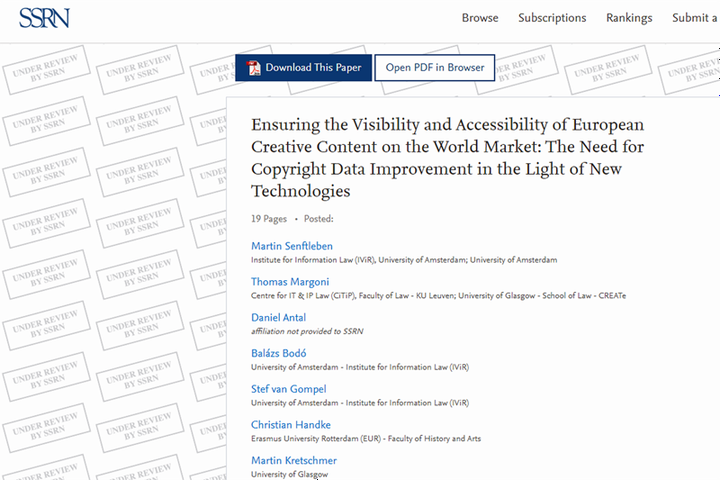Ensuring the Visibility and Accessibility of European Creative Content on the World Market: The Need for Copyright Data Improvement in the Light of New Technologies

The majority of music sales in the world is driven by AI-algorithm powered robots that create personalized playlists, recommendations and help programming radio music streams or festival lineups. It is critically important that an artist’s work is documented, described in a way that the algorithm can work with it.
In our research paper – soon to be published – made for the Listen Local Initiative we found that 15% of Dutch, Estonian, Hungarian, or Slovak artists had no chance to be recommended, and they usually end up on Forgetify, an app that lists never-played songs of Spotify. In another project with rights management organizations, we found that about half of the rightsholders are at risk of not getting all their royalties from the platforms because of poor documentation.
But how come that distributors give streaming platforms songs that are not properly documented? What sort of information is missing for the European repertoire’s visibility? Reprex is exploring this problem in a practical cooperation with SOZA, the Slovak Performing and Mechanical Rights Society, and in an academic cooperation that involves leading researchers in the field. A manuscript co-authored Martin Senftleben, director of the Institute for Information Law in Amsterdam, and eminent researchers in copyright law and music economics, Reprex’s co-founder makes the case that Europe must invest public money to resolve this problem, because in the current scenario, the documentation costs of a song exceed the expected income from streaming platforms.
In the European Strategy for Data, the European Commission highlighted the EU’s ambition to acquire a leading role in the data economy. At the same time, the Commission conceded that the EU would have to increase its pools of quality data available for use and re-use. In the creative industries, this need for enhanced data quality and interoperability is particularly strong. Without data improvement, unprecedented opportunities for monetising the wide variety of EU creative and making this content available for new technologies, such as artificial intelligence training systems, will most probably be lost. The problem has a worldwide dimension. While the US have already taken steps to provide an integrated data space for music as of 1 January 2021, the EU is facing major obstacles not only in the field of music but also in other creative industry sectors. Weighing costs and benefits, there can be little doubt that new data improvement initiatives and sufficient investment in a better copyright data infrastructure should play a central role in EU copyright policy. A trade-off between data harmonisation and interoperability on the one hand, and transparency and accountability of content recommender systems on the other, could pave the way for successful new initiatives. Download the manuscript from SSRN
Our Slovak Demo Music Database project is a best example for this. We started systematically collect publicly available information from Slovak artists (in our write-in process) and ask them to give GDPR-protected further data (in our opt-in process) to create a comprehensive database that can help recommendation engines as well as market-targeting or educational AI apps.
We believe that one of the problems of current AI algorithms that they solely or almost only work with English language documentation, putting other, particularly small language repertoires at risk of being buried below well-documented music mainly arriving from the United States.
We are looking for rightsholders and their organizations, artists, researchers to work with us to find out how we can increase the visibility of European music.